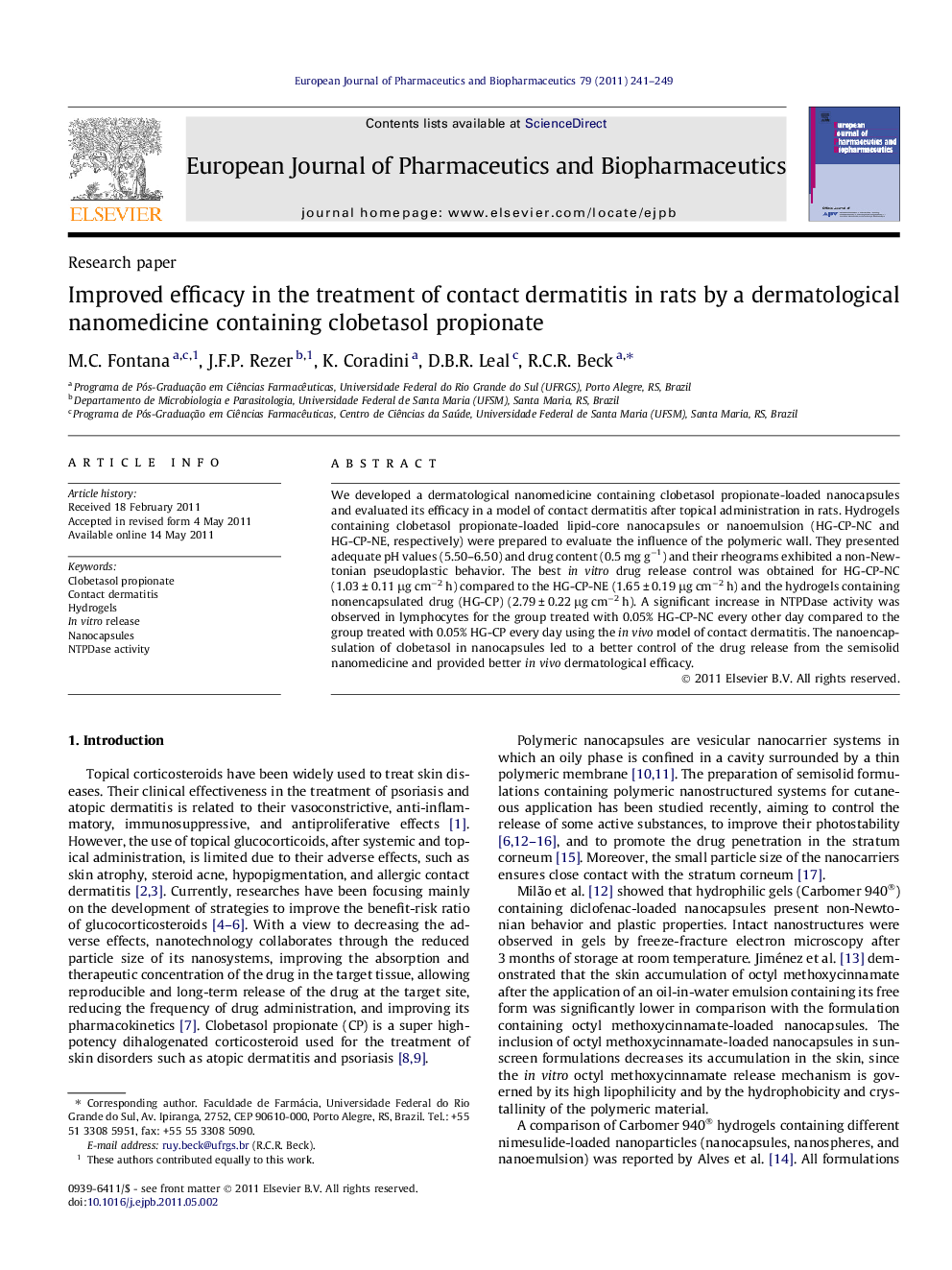| Article ID | Journal | Published Year | Pages | File Type |
|---|---|---|---|---|
| 2085395 | European Journal of Pharmaceutics and Biopharmaceutics | 2011 | 9 Pages |
We developed a dermatological nanomedicine containing clobetasol propionate-loaded nanocapsules and evaluated its efficacy in a model of contact dermatitis after topical administration in rats. Hydrogels containing clobetasol propionate-loaded lipid-core nanocapsules or nanoemulsion (HG-CP-NC and HG-CP-NE, respectively) were prepared to evaluate the influence of the polymeric wall. They presented adequate pH values (5.50–6.50) and drug content (0.5 mg g−1) and their rheograms exhibited a non-Newtonian pseudoplastic behavior. The best in vitro drug release control was obtained for HG-CP-NC (1.03 ± 0.11 μg cm−2 h) compared to the HG-CP-NE (1.65 ± 0.19 μg cm−2 h) and the hydrogels containing nonencapsulated drug (HG-CP) (2.79 ± 0.22 μg cm−2 h). A significant increase in NTPDase activity was observed in lymphocytes for the group treated with 0.05% HG-CP-NC every other day compared to the group treated with 0.05% HG-CP every day using the in vivo model of contact dermatitis. The nanoencapsulation of clobetasol in nanocapsules led to a better control of the drug release from the semisolid nanomedicine and provided better in vivo dermatological efficacy.
Graphical abstractGraphical representation of the higher efficacy of the hydrogel containing clobetasol propionate-loaded nanocapsules in a contact dermatitis model.Figure optionsDownload full-size imageDownload as PowerPoint slide
